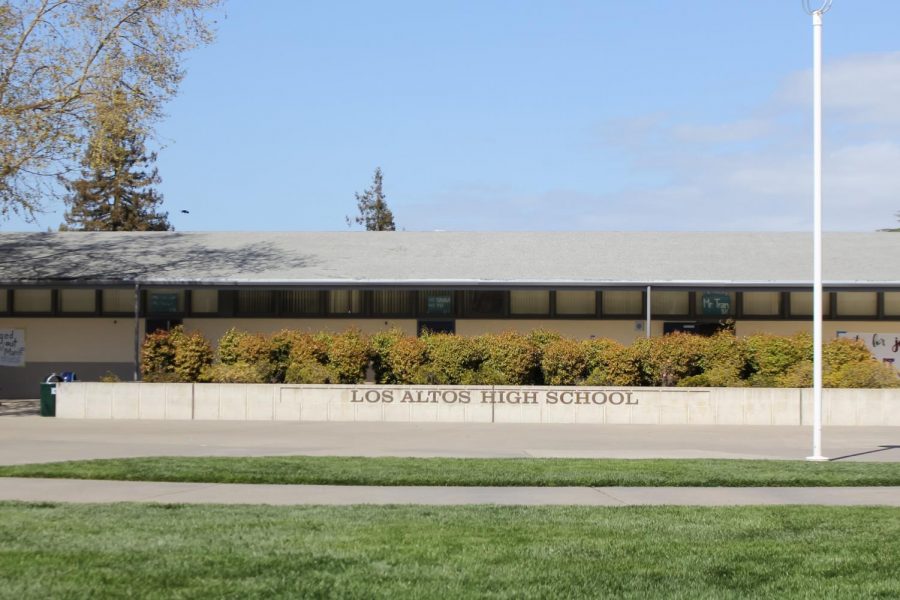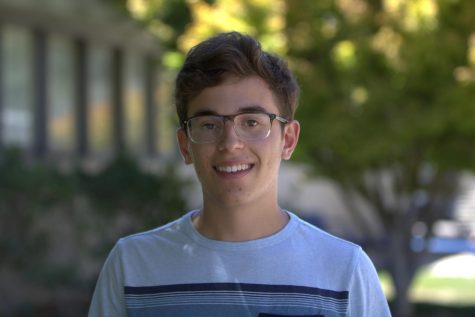PSATs draw hundreds of juniors back to campus, but in-person learning remains a distant goal
On Tuesday, January 26, 238 juniors arrived on campus in staggered groups to take the optional Preliminary SAT.
On Tuesday, January 26, 238 juniors arrived on campus in staggered groups to take the optional Preliminary SAT, which serves as the qualifying test for the National Merit Scholarship, in what was the largest in-person return of students to campus since the school shut down in March 2020.
Administrators, teachers and parent proctors collaborated in an effort to ensure a safe learning environment for students. Desks, which did not have shields, were spaced six feet apart, and the school had extra disposable face masks, hand sanitizer and other sanitary equipment on-hand.
All participating juniors were required to fill out a form to confirm they had no recent contact with anyone who was COVID-positive or experiencing symptoms of the virus. As an added precaution, students arrived in three separate groups at 8:15 a.m., 8:45 a.m. and 9:15 a.m.
However, Assistant Principal Galen Rosenberg, who played a key role in collaborating with the custodial team and organizing classroom setup, won’t make any judgements on how safe the PSAT was just yet.
“The bottom line is, we don’t know for sure that it was safe,” Rosenberg said. “We believe it was, and we put in place all the safety protocols that make sense right now given what we know about COVID, but that doesn’t mean nobody possibly could have gotten infected. We’d have to wait two weeks to see if it worked on that level.”
Rosenberg emphasized that even if Tuesday’s tests were completely safe, it would by no means indicate the school’s readiness to open up to a hybrid model of in-person and distance learning.
“In a hybrid model, it gets a lot more complicated because students don’t just have one class and one teacher in one room,” Rosenberg said. “When you think about the mixing of classrooms and cohorts five or six times a day, it gets five or six times riskier.”
Regardless, junior Isabelle Baker felt confident with the safety measures implemented when she arrived at school to take her PSAT.
“I thought that the school would do a good job,” Isabelle said. “They sent out emails that listed all the precautions and everything we had to do to keep safe, so I wasn’t very worried.”
“I felt very safe,” parent and PSAT proctor Wendy Yu said. “Along with face masks, they provided face shields for the proctors, so I had three layers of protection on.”
However, the cold and windy weather Tuesday morning posed an annoyance to proctors and test-takers alike because safety requirements instructed that doors and windows remain open. The problem was addressed in Yu’s classroom when the school delivered a space heater.
While in-person learning on a wider level remains a long way off, Yu acknowledges the work done by teachers and substitutes for the students who need the in-person environment most.
“I feel a lot more respect for the teachers because I had to yell to make sure the students could hear me,” Yu said. “Doing that for three hours was no big deal, but teaching all day long and coming back every day is impressive.”
In addition to broadening appreciation for the teaching staff’s dedication, for many, Tuesday’s tests have strengthened hope that certain activities will be able to resume shortly. Assistant Principal Rosenberg noted the possibility of allowing more small cohorts to come on campus.
“We were already pretty confident we could provide opportunities for small groups of students who would not be mixing, like robotics or sports teams,” Rosenberg said. “There’s an interest in adding more small-scale opportunities that are worth coming on campus for.”





